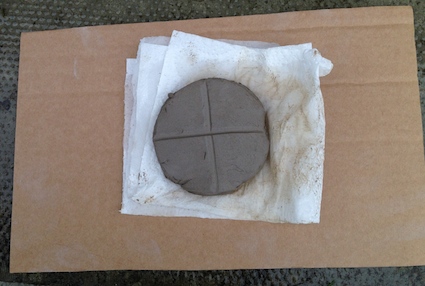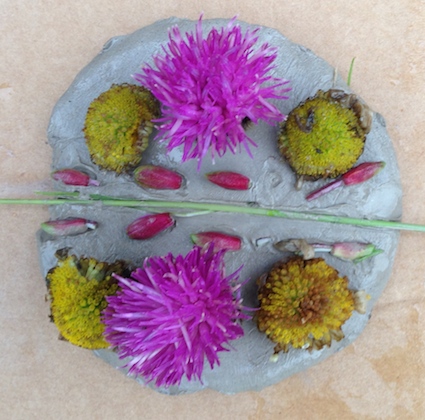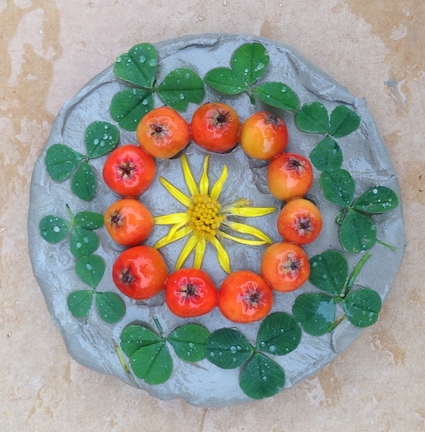
Today has been a wet, rainy day. It was perfect for creating nature circles – or mandalas – depending upon how you choose to introduce and contextualise the activity. For me, I am interested in the mathematical element of this work.
I’ve blogged about symmetry several times using reflections as an introduction in the early years, to setting up reflective investigations and then using photo booth to consider rotational symmetry. Very often, on my training courses, I use symmetry as an example of how any teacher can easily differentiate an activity to meet the learning needs of any individual and to illustrate the progression of concepts involved in understanding symmetry and creating symmetrical patterns.

The problem has always been that on windy days, symmetrical pictures can get blown away when using flowers, grass and leaves. On wet days, everything goes limp and soggy unless you stick to sticks, stones and shells.. So, to over come these problems I have taken inspiration from a wonderful series of blog posts on mandalas from Cathy over at the Nurture Store. I particularly love the ones about flowers and shells. Cathy also highlights some of the other mathematical elements of mandalas or nature circles.
When working outside, I’m a bit of a fan of clay. It’s naturally sticky and malleable. Unlike play dough it does not go all gunky in the rain and does not tempt wildlife to eat bits of it should any be inadvertently dropped by children.

I started by creating a few circles from clay. I put these on damp kitchen roll as then they are easy to move about. The cardboard is a cheap form of clipboard. I decided to experiment. Is it possible to create a design with one axis of symmetry? What about lots of axis? What about no symmetry? It can be helpful to get children to mark in the axis of symmetry that they are going to use.

Using small circles has advantages. There’s not a lot of space for sticking stuff. Automatically this encourages children to consider what they need: a petal or two rather than several flowers. So it’s a gentle introduction to gathering material sustainably.

I also found that it was easy to experiment. If I made a mistake, it was easy to smooth down the clay again. Also, having limited amounts of clay, it was easy to remove the natural materials and put the clay back in its back for use another day! The photos are my memory.

Even though it was positively pouring down at one point, the clay held up and the work was easy to get on with outside. I also like that you can apply this concept to working with children of all ages. Enjoy those wet days! Get out and have fun this year whatever the weather 🙂




















hi Juliet
I was recently introduced to the work of Kathy Klein http://danmala.com/gallerymain/flower/ – wonderful mandala inspiration…
Hello Sam
This takes the form to a whole new level. Thanks for the link.